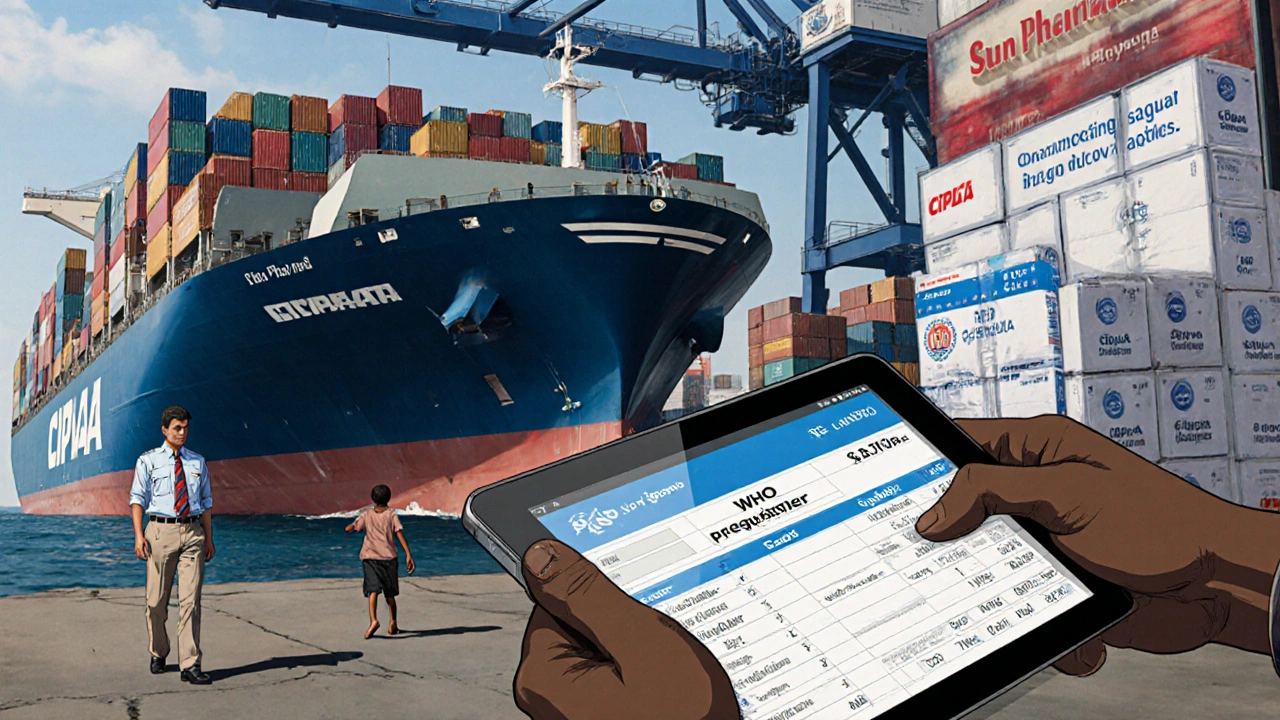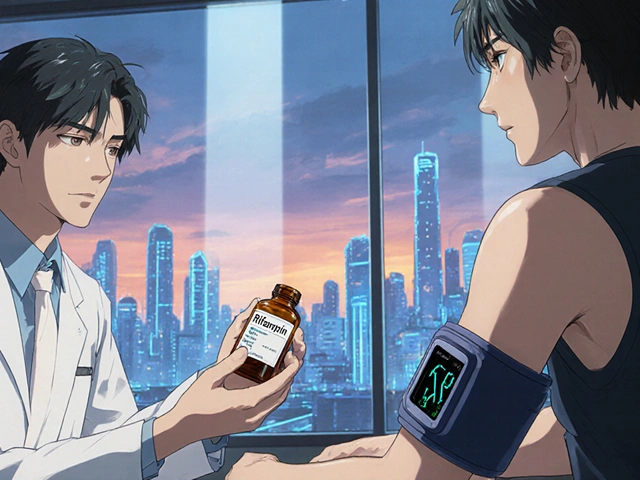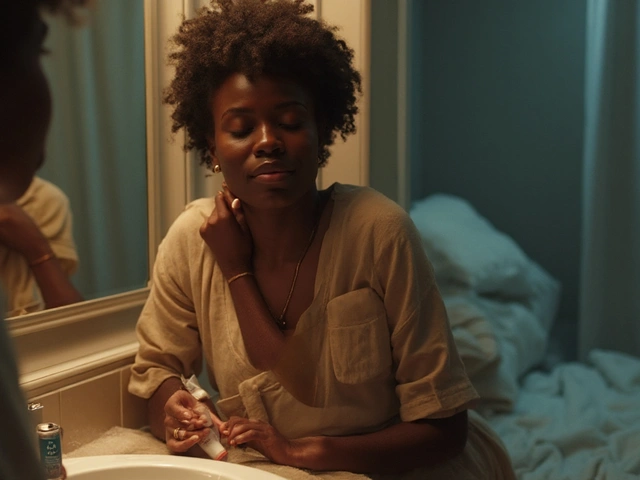Every year, 100 million people are pushed into extreme poverty because they can’t afford basic medicine. In many low-income countries, a single course of antibiotics or antiretroviral drugs can cost more than a week’s wages. Yet the solution isn’t hidden in some high-tech lab-it’s already on the shelves. Generics. These are the same life-saving drugs as the branded ones, made without patents, sold for a fraction of the price. But here’s the problem: even though generics can cut drug costs by 80% or more, billions still can’t get them.
Why Generics Matter More Than You Think
Generics aren’t cheap knockoffs. They contain the exact same active ingredients as the original drugs, tested to meet international safety standards. When the HIV/AIDS crisis hit sub-Saharan Africa in the early 2000s, branded antiretrovirals cost over $10,000 per patient per year. Generic versions dropped that to under $100. That’s not a discount-it’s a revolution. Within a decade, millions of people who would have died got treatment. The same happened with tuberculosis and malaria drugs. In fact, over 90% of HIV treatments in low-income countries today are generics. But here’s the gap: while generics make up 85% of the U.S. drug market by volume, they account for only 5% in low- and middle-income countries. Why? It’s not because people don’t want them. It’s because the system is broken.The Hidden Barriers to Access
You’d think if a drug works and costs less, it would spread fast. But in many places, it doesn’t. Here’s why:- Regulatory delays: In some countries, it takes years to approve a generic drug. Meanwhile, patients wait. The WHO says streamlined approval processes could cut this time in half.
- Tariffs and taxes: Many governments slap high import taxes on medicines-even generics. A 20% tax on a $2 malaria drug makes it unaffordable for families living on $2 a day.
- Weak supply chains: Even when drugs arrive at the national warehouse, they often never reach rural clinics. Power outages, poor roads, and lack of refrigeration mean medicines spoil before they’re used.
- Brand loyalty: Doctors and patients often trust branded drugs more, even when the generic is identical. Marketing by big pharma has shaped this belief, even in places where the brand name costs 50 times more.
And then there’s the money problem. Nearly 90% of people in developing nations pay for medicine out of their own pockets. That means choosing between food and antibiotics. Between school fees and insulin. The World Health Organization says this out-of-pocket spending is the main reason families fall into poverty after a health crisis.
Who’s Making Generics-and Who’s Not Helping
A handful of companies are doing the heavy lifting. Cipla in India, Hikma in Jordan, Sun Pharma in India, Teva in Israel, and Viatris in the U.S. together supply 90% of the essential generic drugs used in low-income countries. These companies have made billions by selling low-cost HIV, TB, and malaria treatments. But here’s the catch: according to the Access to Medicine Foundation’s 2024 report, these firms have clear strategies to expand access for only 41 out of 102 priority drugs. And even then, few of those strategies actually consider what the poorest patients can afford. Meanwhile, big pharma companies like Novartis, Pfizer, and Sanofi offer patient assistance programs. They give discounts or free drugs to some people. But their reporting is vague. No one knows exactly how many patients actually benefit. Transparency is missing. And when you’re trying to save lives, guesswork isn’t enough.
The Real Cost of Inaction
The numbers don’t lie. The WHO target is for 80% of essential medicines to be available in all health systems. Right now, most low-income countries are below 50%. In parts of Africa and Southeast Asia, availability has barely moved since 2010. In the Western Pacific, it’s even dropped. Why? Because governments aren’t investing. In 2001, African nations promised to spend at least 15% of their national budgets on health under the Abuja Declaration. As of 2022, only 23 of 54 African countries met that target. The rest are stuck. They rely on donors, charities, or out-of-pocket payments-none of which are sustainable. And it’s not just about money. Clinical trials for new drugs happen mostly in wealthy countries. Only 43% of trials take place in low-income countries, even though those are the places most affected. That means drugs are tested on people who don’t look like, or live like, the patients who need them most.What’s Working-And How to Scale It
Some places are getting it right. In Rwanda, the government partnered with generic manufacturers to buy bulk antiretrovirals, cut import taxes, and built a digital tracking system so clinics know when medicines are running low. Result? Over 95% of HIV patients now get treatment. In Ghana, a national program started supplying free generics for hypertension and diabetes through public clinics. The cost? Less than $1 per patient per month. Coverage jumped from 20% to 70% in five years. These aren’t miracles. They’re policy choices. Here’s what works:- Remove import taxes on generics. A 5% tax cut can drop prices by 10% or more.
- Speed up drug approval. Countries like Kenya and Uganda now use WHO prequalification to fast-track safe generics.
- Train health workers to trust generics. When nurses understand the science, they recommend them confidently.
- Use data to track supply. Digital systems prevent stockouts. In Malawi, SMS-based alerts cut medicine shortages by 40%.
Big data is now being used by 76% of health organizations in emerging markets to fix these gaps. That’s progress. But tech alone won’t fix a broken system.
The Future Isn’t Just Cheaper-It’s Fairer
The potential of generics is enormous. They’ve already saved millions. But unless we fix the systems that block access, they’ll keep being a promise, not a reality. The answer isn’t more charity. It’s more justice. Governments need to fund public health properly. Regulators need to stop treating generics like second-class drugs. Manufacturers need to make affordability a core part of their strategy-not an afterthought. And patients? They need to be heard. If a medicine costs more than a day’s wages, it’s not affordable. It’s a luxury. And in a world with the technology to make life-saving drugs for pennies, that’s unacceptable.Frequently Asked Questions
Are generic drugs safe for use in low-income countries?
Yes, when they meet international standards. The WHO prequalifies generic medicines for use in public health programs, ensuring they match the quality of branded drugs. Many generics used in Africa and Asia are made in facilities inspected by the FDA or EMA. The real issue isn’t safety-it’s access. Unbranded generics are underused because of mistrust, not risk.
Why don’t more countries produce their own generics?
Many low-income countries lack the manufacturing infrastructure, skilled workforce, or regulatory capacity to produce generics locally. Some also face trade restrictions or pressure from wealthy nations to uphold patent laws. But countries like India and South Africa have shown it’s possible. With investment and technical support, others can too.
Do generic drugs take longer to work than branded ones?
No. Generics are required to have the same bioavailability as the original drug-meaning they work the same way, at the same speed, in the same amount of time. Any difference in how a patient feels is usually due to inactive ingredients, not the active drug. Side effects and effectiveness are nearly identical.
How do patents affect access to generics in poor countries?
Patents give companies exclusive rights to sell a drug for 20 years. After that, generics can enter the market. But some countries extend patent protection through legal loopholes like data exclusivity or patent evergreening. This delays generics for years, keeping prices high. The TRIPS Agreement allows developing nations to override patents in public health emergencies-but few use this power due to political pressure.
Can generic drugs help fight antibiotic resistance?
Yes-if they’re used correctly. Antibiotic resistance grows when people can’t afford full courses, so they take partial doses. Cheap generics make it possible to complete treatment. But if generics are poorly regulated or counterfeit, they can worsen resistance. That’s why quality control and education are just as important as price.
What role do international donors play in improving access?
Donors like the Global Fund and Gavi have been critical in funding bulk purchases of generics for HIV, TB, and vaccines. But they often bypass local health systems, creating dependency. The best approach is to fund systems-not just drugs. That means helping countries build supply chains, train staff, and manage procurement sustainably.





